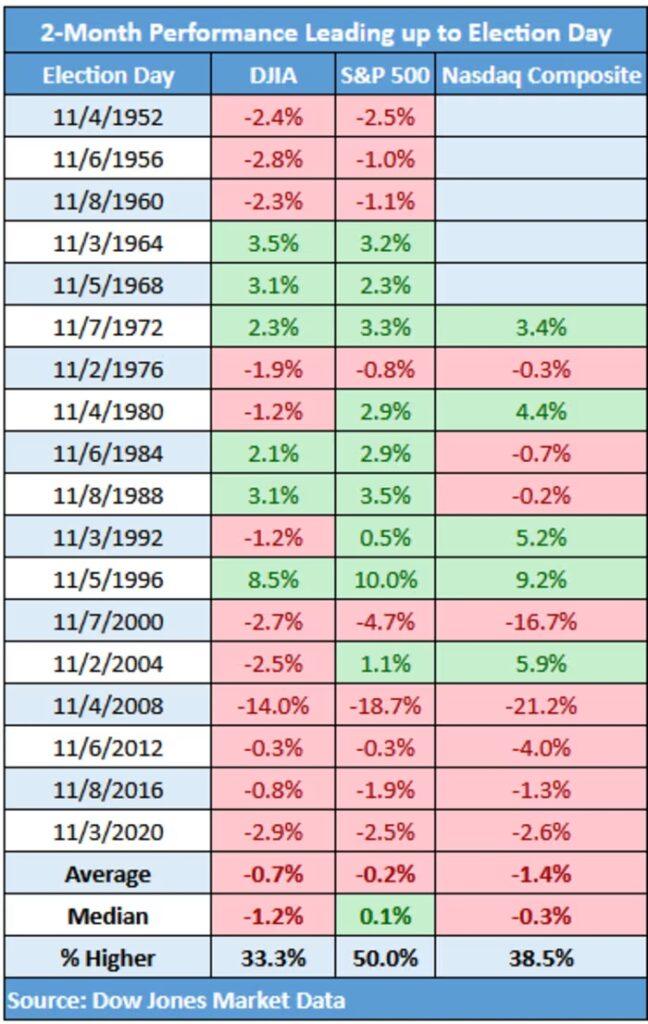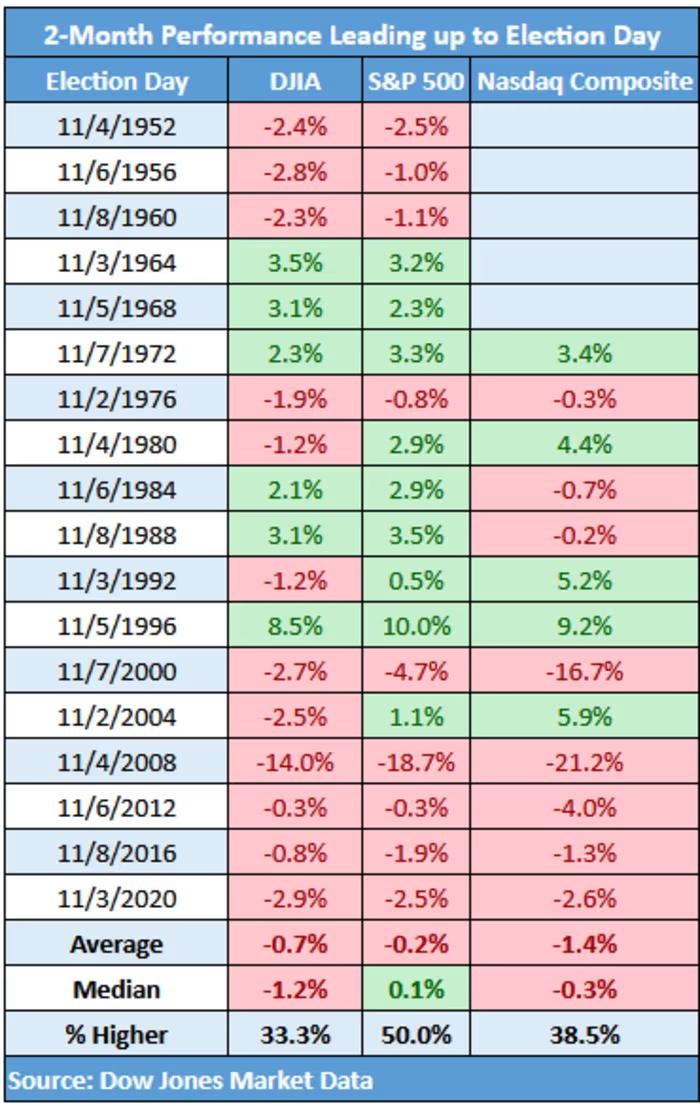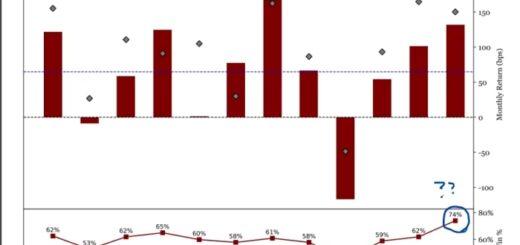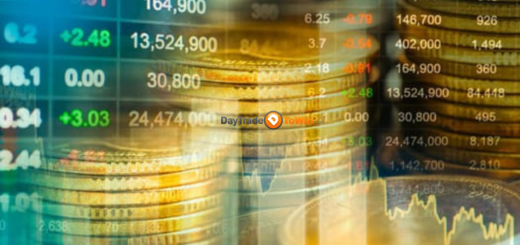Election Jitters: Why the Market Dips Before Election Day
Since 2008, the S&P 500 has declined during the two months leading up to every U.S. presidential election, with an average drop of 5.8%, according to Dow Jones Market Data.
Looking further back to 1952, the index has averaged a slight decline of 0.2% in this period, though the median result shows a 0.1% gain, with a 50-50 split between positive and negative outcomes.

While historical trends can be insightful, market experts warn against viewing them as predictive. Both the Dow Jones Industrial Average and Nasdaq Composite have also typically declined in this two-month window.
The Dow has risen only one-third of the time, and the Nasdaq just 38.5% of the time since 1972.

September is historically the weakest month, with an average decline of 0.78% since 1944. In presidential election years, this weakness often extends into October.
Normally a positive month with a 1.04% average gain, October has instead seen an average drop of 0.45% in election years.




